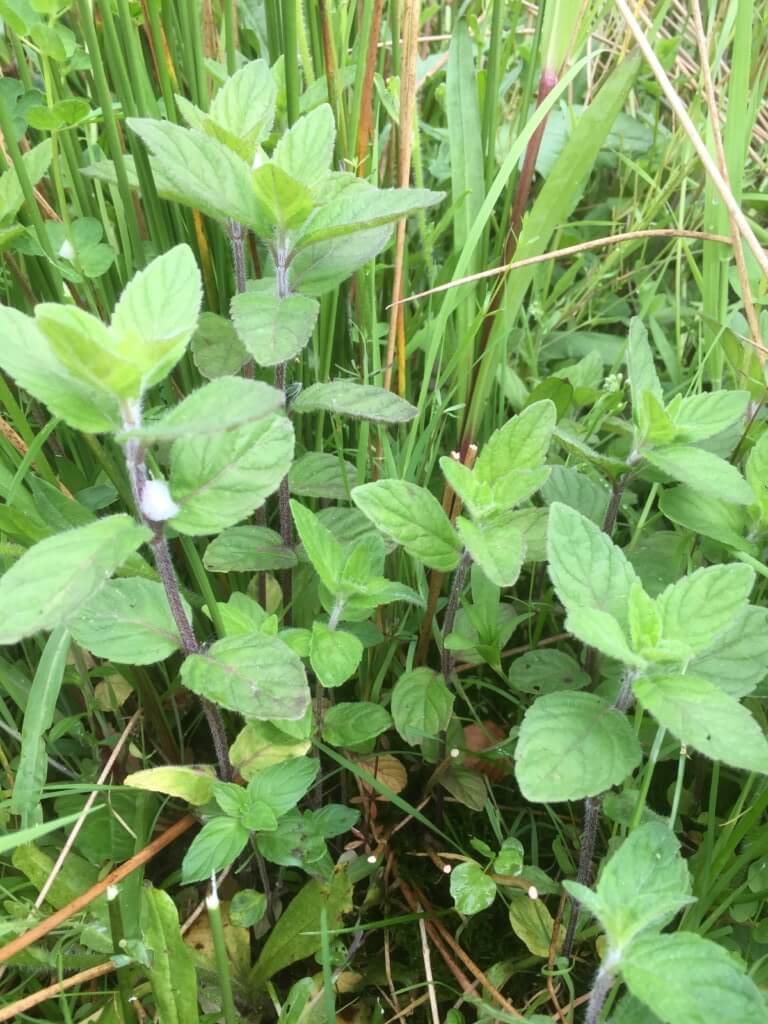
The smell of mint induces a feeling of nostalgia in me that no other plant can match. One of the few jobs I was trusted not to mess up as a small child was to go out into the back garden to gather a few springs of mint for the Sunday roast. It must have been the first plant I learnt to recognise and put a name to, and 50 years on the scent still takes me back to that distant childhood. Perhaps that memory also helped foster a belief that nothing connects people with wildlife more than the hands-on approach of interacting with it.
There are a number of different wild mint species that all look rather similar, especially before they begin to flower. They also hybridise readily which makes things even more complicated. I’m afraid that as a non-botanist I tend to lump them all together. This one might be Water Mint but I wouldn’t put money on it. Thankfully, so long as a plant looks and, more importantly, smells like mint then it is safe to use.
As well as its traditional use to bring out the flavours in roast lamb, the leaves make a refreshing drink. It’s a nice way to end a walk if you can locate a handy patch of plants as you near home. Just nip off the uppermost whorls of leaves from two or three plants and add recently-boiled water. The flavour intensifies as the leaves continue to stew so remove them once you find a taste that suits your palette.
[registration_form]
I have always found it intriguing that so many of our culinary herbs come from two plant families, the Lamiaceae (mint, thyme, sage, basil etc) and the Apiaceae (fennel,dill, parsley, caraway, coriander etc). I guess that once the trait of producing aromatic compounds arose within a family it tended to be shared by descendants of the same common ancestor. I believe there is evidence that these aromatics have an adaptive function as defences/deterrents against leaf-eating or sap-sucking insects and may also have an anti-microbial or anti-fungal effect (properties exploited in their use as herbal remedies).
As well as culinary herbs the Apiaceae also includes a number of species that are highly toxic – the various hemlocks and dropworts – so it is as well to be confident of your ID if sampling plants from this family!